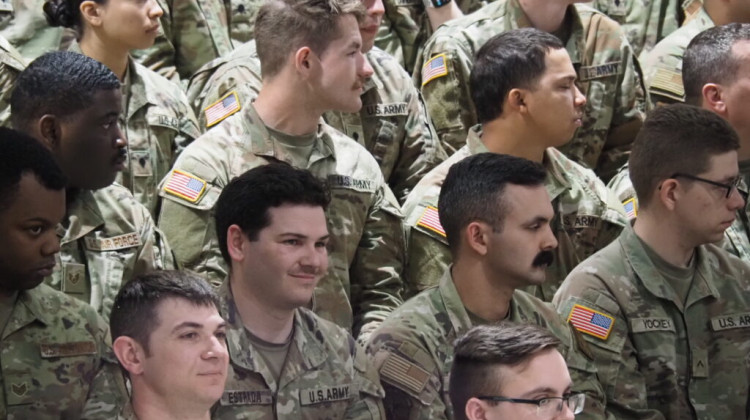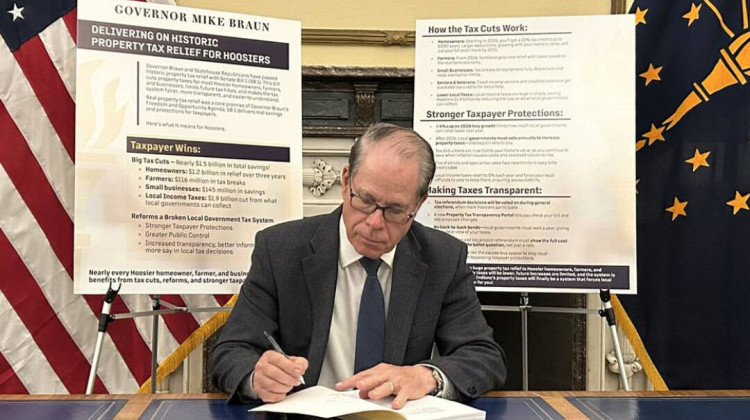
More than 44 percent of Hoosiers find it extremely or somewhat important to live in a place where others share their political views.
FILE PHOTO: Justin Hicks/IPB NewsMore than 44 percent of Hoosiers find it extremely or somewhat important to live in a place where others share their political views. This could be contributing to political polarization
The Indiana Public Broadcasting-Ball State Hoosier Survey also suggests that nearly 80 percent of Hoosiers see major differences between the two political parties.
Chad Kinsella is the managing director of the Ball State University Bowen Center for Public Affairs. He said people tend to stick to like-minded groups within their communities.
“There are urban Republicans and there are suburban and rural Democrats but further and farther between,” he said. “I mean, do those people encounter the Republican neighbors or Democratic neighbors in the urban areas? And there's some suggestions that they don't.”
Kinsella said groups of people tend to be geographically polarized or live where people have similar lifestyles.
“If you look at how people vote, there are concentrations of where Democrats or Republicans vote, it's pretty clear,” he said.
Kinsella said there are counties that are typically blue, like Monroe or Marion, and other areas that are more rural that tend to vote red. He said these concentrated groups demonstrate these politically polarizing trends.
Survey results showed that nearly 17 percent of Hoosiers strongly dislike Republicans and more than 21 percent strongly dislike Democrats.
“People either really love or really don't like the other political party,” Kinsella said.
Join the conversation and sign up for the Indiana Two-Way. Text "Indiana" to 73224. Your comments and questions in response to our weekly text help us find the answers you need on statewide issues.
He said differing lifestyles between the parties likely contributes to this polarization and where they may decide to live.
“Do people like to live around people like themselves? They do,” Kinsella said. “A lot of it has to do with kind of lifestyles. It's the types of churches that we like to go to. Younger people tend to [live in the] city where there's a lot more things going on. And then we get older and we have kids, you want the white picket fence and everything like that, a little bit more space.”
Kinsella said these problems exist nationwide, not just in Indiana.
The Hoosier Survey polled 600 people in late October and early November. The margin of error is plus or minus 4 percentage points. The interviews were conducted by telephone (42 by landline and 257 by cell phone) and online.
Contact reporter Violet at vcomberwilen@wfyi.org or follow her on Twitter at @ComberWilen.
9(MDAyMzk1MzA4MDE2MjY3OTY1MjM5ZDJjYQ000))
 DONATE
DONATE






 Support WFYI. We can't do it without you.
Support WFYI. We can't do it without you.